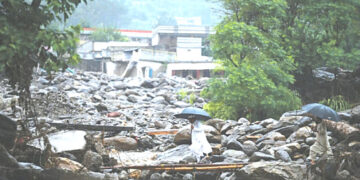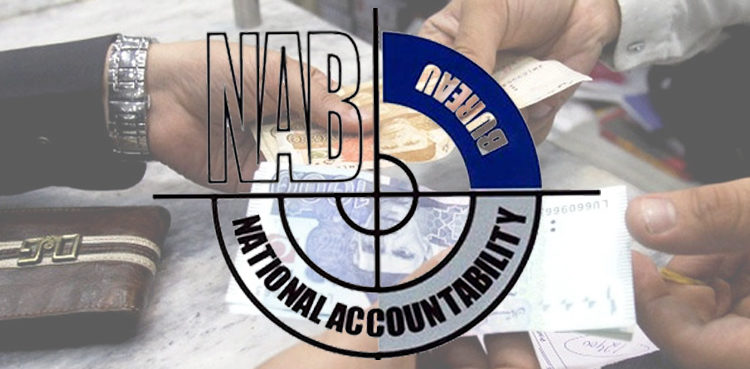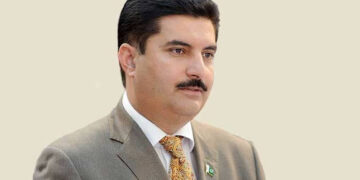 Pakistan International Airlines (PIA), Pakistan’s national flagship airline, has been a pioneer since its inception in 1955. PIA provides air transport services. Other activities of the company include provision of engineering and other allied services.PIA Cargo, the company’s air freight division, delivers cargo shipments to over 38 international destinations and serves the rest of the world through interline carriage, in addition to its domestic network in Pakistan. Its flagship courier service, Speedex, delivers documents and parcels of any size, to the doorstep of its customers. PIA Engineering is an established aircraft maintenance and repair company that provides solutions to the aviation industry. PIA Engineering delivers maintenance and overhauling services for customers, as well as PIA’s fleet of aircraft.
Pakistan International Airlines (PIA), Pakistan’s national flagship airline, has been a pioneer since its inception in 1955. PIA provides air transport services. Other activities of the company include provision of engineering and other allied services.PIA Cargo, the company’s air freight division, delivers cargo shipments to over 38 international destinations and serves the rest of the world through interline carriage, in addition to its domestic network in Pakistan. Its flagship courier service, Speedex, delivers documents and parcels of any size, to the doorstep of its customers. PIA Engineering is an established aircraft maintenance and repair company that provides solutions to the aviation industry. PIA Engineering delivers maintenance and overhauling services for customers, as well as PIA’s fleet of aircraft.
====================================================
COMPANY SNAPSHOT
====================================================
Name of company Pakistan International Airlines
====================================================
Nature of Business Airline service
Ticker PIAC
Net Revenue CY ’08 Rs 89,201,257,000
Net Revenue CY ’09 Rs 94,653,765,000
Share price (avg.) Rs 3.4
Market Capitalization Rs 5,903,033,000
====================================================
Aviation industry
Pakistan aviation industry has been suffering from a dearth of revenue and travellers dues to a number of reasons. These reasons include absence of a comprehensive aviation policy, economic slowdown, increased POL prices, worsening law and order situation, energy and power crises, a not-so-stable currency, financial and administrative issues and deterioration of security across the country. Moreover, the ratio of issuing visas to Pakistanis by the First World had also decreased alarmingly due to security concerns. Also, poor law and order situation has made Pakistan an un-favourable destination, which has impacted the non-Pakistani traveller number. These conditions have adversely affected the international business.In 2009, passenger and cargo yields plummeted by 12% and 16% respectively. During 2009, passenger traffic shrunk by 3.4% globally. Industry Revenue Passenger Kilometres (RPKs) and Revenue Freight Tonne Kilometres (RFTKs) growths have been negative at -3.5% and -10.1% respectively.Outgoing was yet another year of sharp swings in Oil prices. Prices for a barrel (bbl) of IPE Brent ranged from around USD 40/bbl (in February) to USD 80/bbl (in October) last year. The average price was around USD 62.53/bbl, 36% lower than the previous year. Over the remainder of 2009, the crude oil price rose sharply. This trend was driven by positive expectations for the economy and speculation of a similar magnitude to that seen in 2008.Last quarter of 2009 showed consistent signs of improvement in the air freight business. Volumes and yields are now moving in the right direction – upwards – although there is still a long way to go before early 2008 levels are regained. Several years of growth have been lost in this extra ordinary downturn. Moreover, revival in the economic growth is very uneven – with a strong rebound in Asia and parts of South America but weak growth in developed markets – and is expected to remain that way for some time. But world trade is now picking up adding to the impetus given to air freight by the inventory cycle and mode switching. Yields are starting to turn up, as load factors recover, but low aircraft utilization and scheduled delivers imply that capacity remains a threat to restoring profitability.
Recent results (3Q10)
Net loss for the period stood at Rs 11.7 billion compared to Rs 10.7 billion, an increase of 8% over corresponding period last year. The increase is mainly attributable to a higher tax bill. Loss per share stood at Rs 4.79 compared to a loss of Rs 5.03 last year. Operational losses decreased by 8% over the nine-month period. This improvement was mostly due to a 16% increase in net revenue and a 60% decrease in exchange loss. Some gains were offset by a rise of 51% in fuel expenses and 14.6% in salaries of employees (two biggest expenses). Oil prices during the nine-month period were volatile, starting the year 2010 at US $ 76.01/barrel and reaching US $80.01 in October 2010.The company currently has 450 employees per aircraft, which is the highest in the world. This is in contrast to the world average of 130 employees per aircraft. Recently, the management has announced new programmes for its employees including a housing scheme and employee stock ownership programme.Gross profit margin and net profit margin for the period stood at 10% and -15.73% respectively. They highlight the significance of the challenge management faces in engineering a turnaround.Rather than generating positive operating income, PIA relies on short-term borrowing and trade payables to pay its bills and keep it afloat. The current ratio (a measure of liquidity) stood at 0.25 as compared to 0.24 last year. On the brighter side, cash balance increased from Rs 0.74 billion last year to Rs 3 billion. Interest costs for the company decreased slightly because of lower interest rates globally and the fact that a significant portion of PIA’s debt is linked to the LIBOR which has reached historic lows. The company’s capital expenditure for the period decreased by 48% to Rs 1.1 billion compared to Rs 2.1 billion last year.
PIA currently has a negative equity of Rs 30 billion. The company benefited from a surplus on reevaluation of fixed assets during the period which increased equity by Rs 27 billion. Total accumulated losses amount to Rs 83 billion and are the main cause of the negative equity.Recently, the management announced a 5-year turnaround plan and has asked the government to write off losses of $1.7 billion to prevent bankruptcy. The plan envisions cutting costs and buying new planes that are more fuel efficient. News items suggest the likelihood of government accepting the plan is low, and thus PIA will either have to resort to more borrowing or declare bankruptcy over the next few years.The market capitalisation of the company is Rs 5,833 billion. Most of PIA’s stock is owned by the government of Pakistan and state-institutions. Trading volumes in the stock is low and the company has a beta of 0.929, which means its share price is slightly less volatile than the overall KSE-100. PIA has paid no dividends during the nine-month period. The company last paid a dividend in 2004 of Rs 0.50 per share.Financial performance FY05- FY09:Before accounting for debt servicing and exchange losses, the corporation becomes profitable at operating level after 4 years of operating at a loss on a similar basis. The revenue in 2009 went up by 6.4% year on year, whereas yield increased by 7.0% in 2009 – Brecorder










